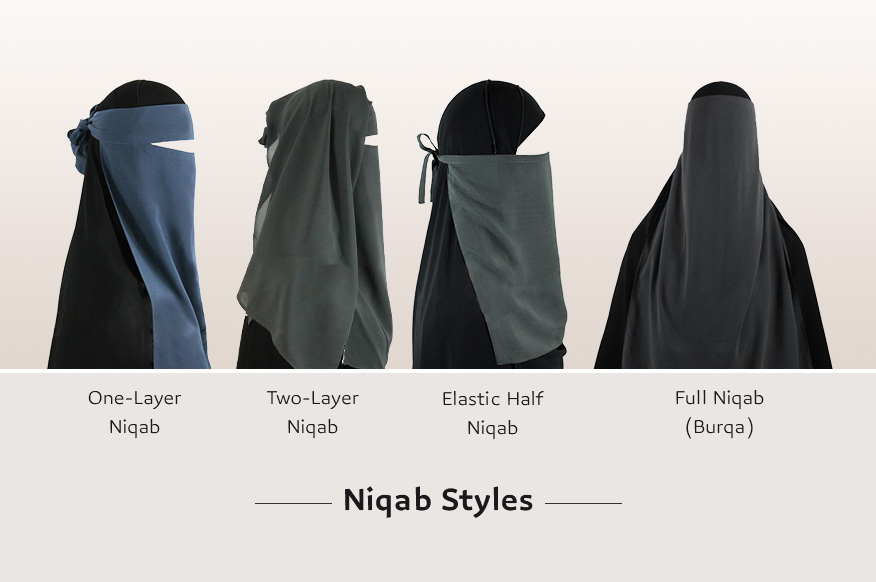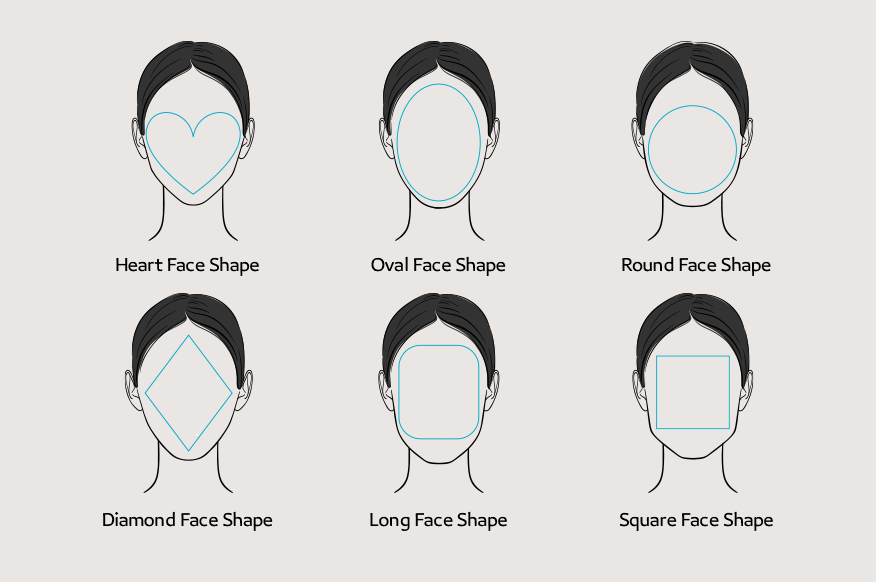In a world where fashion is not just a form of expression but also a reflection of cultural and religious values, the niqab stands as a powerful symbol of modesty and devotion for Muslim women. This traditional Islamic veil has transcended its religious significance to become an integral part of contemporary fashion. As the popularity of niqab fashion continues to grow, it offers a diverse array of options that allow women to express their individual style while staying true to the principles of their faith.
In this article, we embark on a journey into the world of niqab fashion, where we will explore:
What is a niqab?
How to choose the perfect Niqab Style
- Niqab fabric
- Niqab Color
How practical the niqab is?
Finding a niqab style that suits your face and appearance.
How to take care of your niqab?
Let's delve into the art of mastering niqab fashion and discovering the perfect fit for your unique identity and beliefs.
What is a niqab?
A niqab is a traditional Islamic garment worn by some Muslim women that covers the face, leaving only a narrow opening for the eyes. It is typically worn in combination with other modest clothing and is used as a form of religious and cultural expression, emphasizing concepts of modesty and privacy. The style and design of niqabs can vary, but their primary purpose is to cover the face while allowing the wearer to see and breathe.
How to choose the perfect Niqab Style
Niqabs come in different styles, each with their own special look and how much they cover. Here are some common styles:

1- One-Layer Niqab: This niqab style consists of a single piece of fabric that covers the face. It typically extends from the top of the head to below the chin, leaving an opening for the eyes. Some variations may include a mesh or thin fabric screen over the eye area to provide additional privacy and visibility. The one-layer niqab offers a balance between modesty and comfort, making it a popular choice for many wearers.
2- Two-Layer Niqab: The two-layer niqab is a versatile option that provides more styling possibilities. It comprises two separate pieces—the face cover and the headscarf. The face cover is similar to the one-layer niqab, but it can be worn in combination with various headscarf styles. This allows wearers to experiment with different looks while maintaining modesty. The two-layer niqab offers flexibility and adaptability to suit individual preferences and occasions.
3- Elastic Half Niqab: This niqab style is designed for comfort and ease of movement. It features an elastic band that holds the fabric securely over the nose and mouth area. The elastic half niqab is especially convenient for wearers who require frequent adjustments or need to quickly remove the face covering when necessary. It strikes a balance between functionality and modesty, making it a practical choice for everyday activities.
4- Full Niqab (Burqa): The full niqab, commonly referred to as a burqa, is a comprehensive covering that extends from the head to toe. It consists of a face veil that conceals the entire face, with a mesh or fabric screen allowing the wearer to see through. The rest of the body is covered by a long, loose-fitting outer garment. The burqa is known for its maximum coverage and is often worn in regions and communities where there is a strong emphasis on modesty and privacy. While it provides the utmost concealment, it may also limit mobility due to its full-length design.
Picking the right niqab style is a personal choice. It depends on what feels comfortable to you, your culture, and your religion. When you choose a niqab style, think about why you want to wear it, what you like, and how much of your face you want to cover. We're here to help you with tips and advice, so don't worry if it feels a bit confusing at first. With our guidance, finding the niqab that suits you best will be easier.
3 Factors to Consider When Choosing a Niqab
When choosing a niqab, you need to think about three important things: the fabric, the color, and how practical it is.
1- Material and Texture Preferences

Choosing the perfect niqab fabric relies on individual preferences, climate considerations, and overall comfort. It is crucial to consider three key factors:
1- Material: The fabric you select for your niqab significantly impacts your comfort. Materials like cotton and chiffon, which allow for good breathability, are particularly suitable, especially in hot climates. They promote airflow, reducing discomfort from overheating.
2- Weight : Opting for a lightweight niqab is essential to avoid the strain of excessive heaviness. This ensures you can wear it comfortably for extended periods without discomfort, enabling you to focus on your daily activities without needing frequent adjustments.
3- Durability : Choosing materials known for their durability extends the lifespan of your niqab and reduces the need for frequent replacements, which can save you money. It also ensures that your attire remains dependable and can stand regular use and wear.
Some commonly favored niqab fabrics include:
- Cotton: Cotton niqabs are breathable, soft, and comfortable, making them an excellent choice for hot and humid weather. They encourage air circulation, reducing the risk of overheating.
- Chiffon: Chiffon niqabs are lightweight and flowing, offering an elegant appearance. They are also breathable, making them suitable for warmer climates.
- Jersey: Jersey fabric is stretchy and comfortable, allowing for ease of movement. It drapes well and is often chosen for its comfort and versatility.
- Nylon: Nylon niqabs are known for their durability and ease of maintenance. They can stand with regular use and washing without losing their shape or color.
- Crepe: Crepe fabric provides a textured look and is often preferred for its elegant appearance. It can be suitable for both casual and formal occasions.
- Georgette: Georgette niqabs have a subtly textured surface and are appreciated for their graceful drape. They can be an excellent choice for special occasions.
Ultimately, the ideal niqab fabric is the one that aligns with your personal comfort preferences, local climate conditions, and intended use. Experimenting with various fabrics and styles is advisable to discover the one that suits you best.
2- Niqab Color Choices

When it comes to picking the color for a niqab, it's not just about what looks nice. The color you choose says a lot about who you are and what you believe in. Some colors, like black and earthy tones, are common because they show modesty and a strong connection to religious values. But nowadays, more and more people are trying out different colors like soft blues and pastels to express themselves while still keeping their faith. Plus, the weather can also play a role - lighter colors are better for hot places to stay cool. So, your niqab color is like a personal statement, showing your unique style and your place in a long tradition of modest Islamic fashion.
3- How practical is the niqab?

When you're choosing a niqab, you should think about how practical it is. Practicality means making sure your niqab not only fits your style but also works well in your daily life.
Firstly, a good niqab should be easy to put on. It should fit comfortably on your face without making you uncomfortable or itchy. Some niqabs can be adjusted to fit different face shapes and sizes, which is handy because it means you can get one that's just right for you.
Also, think about how easy it is to take care of your niqab. Choose materials that are comfortable but also easy to clean and look after. This way, you won't have to spend too much time and effort keeping it in good shape. When your niqab is easy to take care of, it will last longer and always look nice and tidy, which is important for your modesty and personal style.
Explore ALTOBEH's high-quality, comfortable niqabs in various styles and colors.
What is the best niqab for each face shape?

Choosing the right niqab for your face shape can make you look nicer and even out your features. Here's a simple guide for different face shapes:
Round Face: If your face is round, consider niqabs with angles or shapes that aren't straight. These can make your face look less round.
Oval Face: Oval faces are versatile, so you can pick from many niqab styles, whether it's a one-piece or two-piece design. They usually look good with any style.
Heart Face: If your face is heart-shaped with a big forehead and a smaller chin, go for niqabs with extra fabric around your jawline. Two-piece niqabs with fabric around the chin can also work well.
Square Face: For square faces, look for niqabs with soft, curvy lines and edges. These styles can make your face look less angular and more balanced.
Long Face: If your face is long, think about niqabs that make your face seem a bit wider. One-piece niqabs with a wider veil or two-piece niqabs with extra fabric on the sides can be a good choice.
Face: If you have a diamond-shaped face with wide cheekbones and forehead but a narrow chin, search for niqabs that balance your cheekbones and forehead with a bit more fabric around your chin.
5 Simple Tips to Take Care of your Niqab
Regular Washing: To keep your niqab clean and fresh, wash it regularly according to the care instructions provided by the manufacturer. Most niqabs can be hand-washed or machine-washed with gentle detergent. Avoid using harsh detergents or bleach, as they can damage the fabric and colors.
Air Drying: After washing, allow your niqab to air dry naturally. Avoid using a tumble dryer or exposing it to direct sunlight for extended periods, as this can cause fabric damage and color fading. Hanging it indoors or in the shade is a better option.
Storage: When you're not wearing your niqab, store it in a clean and dry place.Using a breathable storage bag or hanging it in a wardrobe can help prevent dust and odors from accumulating. Avoid placing heavy objects on top of it, as this can cause wrinkles and deformation.
Ironing: If your niqab wrinkles, use a low-heat iron to gently press it. Be sure to check the fabric's care instructions, as some materials may require specific ironing settings. If in doubt, use a cloth or a towel as a buffer between the iron and the niqab to avoid direct contact.
Rotate and Rest: If you have multiple niqabs, rotate their usage to prevent excessive wear and tear on a single one.Giving your niqabs a break between wears allows them to maintain their shape and durability for a longer time.
By following these simple care tips, you can ensure that your niqab remains in good condition, stays comfortable to wear, and maintains its appearance over time.